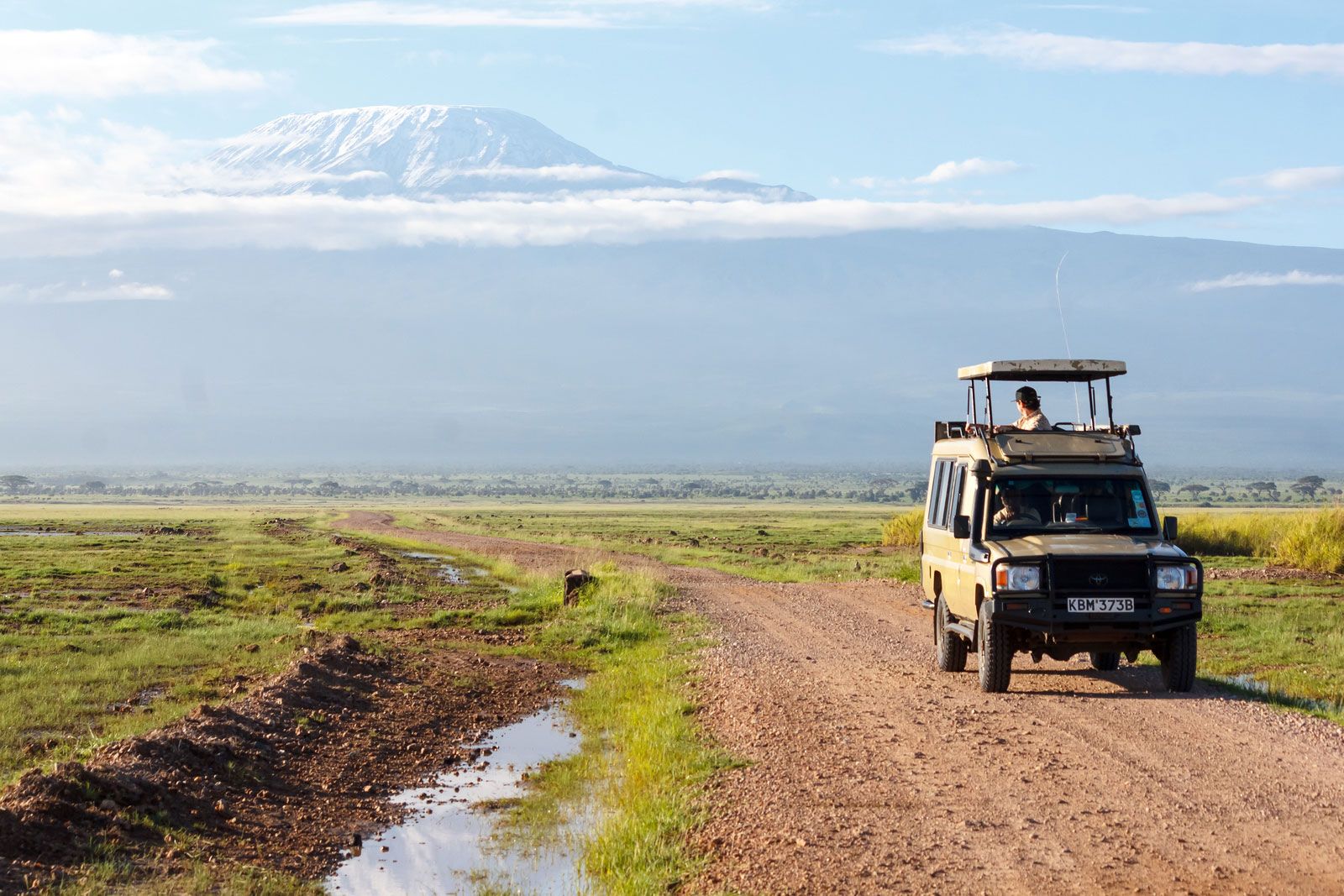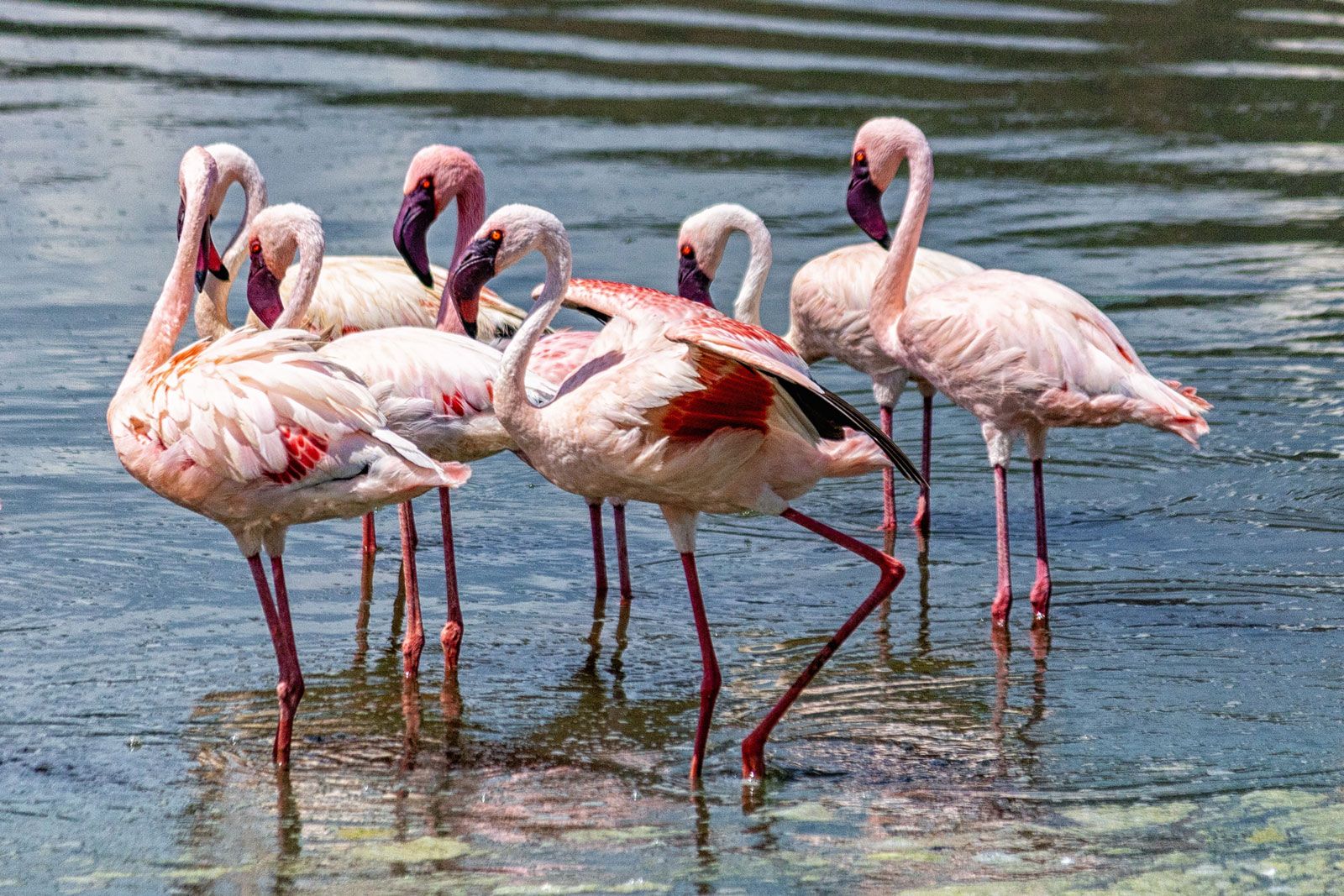-1.jpg)
Best Places to Visit in Kenya: Top 10 Must-See Destinations 2025
2 min readKenya, the jewel of East Africa, offers an extraordinary tapestry of experiences that captivate travelers from around the world. From the legendary savannas where the Great Migration unfolds to pristine beaches along the Indian Ocean, Kenya delivers adventure, culture, and natural beauty in equal measure. This guide explores the ten most spectacular destinations that showcase why Kenya remains one of Africa's premier travel destinations.
10 must-see destinations in Kenya
1. Maasai Mara National Reserve
The Maasai Mara stands as Kenya's crown jewel, renowned worldwide for hosting the most spectacular wildlife show on Earth. This vast expanse of golden grasslands, acacia woodlands, and meandering rivers creates the perfect stage for nature's greatest drama.
From July to October, the Great Migration transforms the Mara into a living, breathing spectacle as over two million wildebeest, zebras, and gazelles thunder across the plains in their eternal search for greener pastures. The dramatic river crossings, where crocodiles lie in wait, represent some of the most intense wildlife encounters you'll witness anywhere on the planet.
Beyond the migration, the Mara sustains exceptional year-round wildlife viewing. Lions lounge in the shade of acacia trees, leopards drape themselves across branches, and cheetahs sprint across the open plains. The reserve also offers cultural experiences with the Maasai people, whose traditional lifestyle and vibrant culture add depth to any visit.
Best time to visit: July to October for the Great Migration; excellent wildlife viewing year-round
Activities: Game drives, hot air balloon safaris, cultural visits, photography workshops
2. Amboseli National Park

Amboseli presents one of Africa's most iconic scenes: massive herds of elephants moving gracefully across the savanna with the snow-capped peak of Mount Kilimanjaro creating a breathtaking backdrop. This relatively small park punches far above its weight in terms of wildlife density and photographic opportunities.
The park's swamplands, fed by underground springs from Kilimanjaro, create verdant oases that attract incredible concentrations of wildlife. Amboseli's elephant population is among the most studied in the world, and visitors often witness multi-generational herds engaging in complex social behaviors. The park also supports healthy populations of lions, cheetahs, buffalo, and over 400 bird species.
The contrast between the arid landscape and the lush swamps creates diverse ecosystems within a compact area, making game drives here particularly rewarding. The clear skies and dramatic landscapes make Amboseli a photographer's paradise, especially during the golden hours when Kilimanjaro emerges from its cloud cover.
Best time to visit: June to October and January to March
Activities: Game drives, elephant research center visits, Maasai cultural experiences, photography
3. Samburu National Reserve
Samburu offers a completely different safari experience, transporting visitors to Kenya's rugged northern frontier where semi-arid landscapes stretch to distant horizons. This reserve is famous for its unique wildlife species that have adapted to the harsh, dry conditions.
The "Samburu Special Five" – Grevy's zebra, reticulated giraffe, Somali ostrich, Beisa oryx, and gerenuk – can only be found in this region of Kenya. These distinctive species, along with healthy populations of elephants, lions, and leopards, thrive along the life-giving Ewaso Ng'iro River that cuts through the reserve.
The cultural component of Samburu is equally compelling. The Samburu people, closely related to the Maasai, maintain their traditional semi-nomadic lifestyle and offer visitors authentic insights into their customs, colorful attire, and warrior traditions. The landscape itself, with its red earth, scattered acacia trees, and dramatic rocky outcrops, creates a stunning backdrop for both wildlife viewing and cultural encounters.
Best time to visit: June to October and December to March
Activities: Game drives, river walks, cultural visits, bird watching, stargazing
4. Lake Nakuru National Park

Lake Nakuru transforms the concept of a wildlife sanctuary into something approaching the surreal. This alkaline lake, set within a compact national park, creates one of the world's greatest ornithological spectacles when conditions are right.
While flamingo numbers fluctuate based on water levels and algae conditions, when present, they create a pink carpet across the lake's surface that defies belief. Even when flamingo numbers are lower, the park supports over 450 bird species, making it a birder's paradise. Pelicans, cormorants, kingfishers, and African fish eagles are among the year-round residents.
The park's terrestrial wildlife is equally impressive. Both black and white rhinos roam the grasslands and woodlands, making this one of the best places in Kenya to see these magnificent creatures. The park also supports Rothschild's giraffes, lions, leopards, and large herds of buffalo. The varied habitats, from the lake shore to fever tree forests to grasslands, create excellent game viewing opportunities within a relatively small area.
Best time to visit: Year-round, though flamingo numbers vary seasonally
Activities: Game drives, bird watching, rhino tracking, photography, nature walks
5. Tsavo National Parks (East and West)
Tsavo, split into East and West sections, represents Kenya's largest protected ecosystem and offers an authentic wilderness experience that harks back to the Africa of old. Together, these parks cover over 22,000 square kilometers of diverse landscapes, from semi-arid plains to volcanic hills and palm-fringed rivers.
Tsavo East is famous for its red elephants, colored by the iron-rich soil they dust themselves with for protection against insects. The park's vast open spaces and dramatic landscapes, including the Yatta Plateau (the world's longest lava flow), create a sense of endless wilderness that's increasingly rare in modern Africa.
Tsavo West offers more varied topography, with the stunning Mzima Springs providing crystal-clear water where hippos and crocodiles can be observed from an underground viewing chamber. The park's volcanic landscape, including the Shetani Lava Flows, adds geological interest to the wildlife experience. Both parks offer excellent game viewing with lower tourist densities than more famous destinations.
Best time to visit: June to October and January to March
Activities: Game drives, Mzima Springs visits, rock climbing, bird watching, camping
6. Diani Beach
After the dust and excitement of safari adventures, Diani Beach offers the perfect counterpoint with its pristine white sands, crystal-clear turquoise waters, and swaying coconut palms. Located on Kenya's south coast, Diani consistently ranks among the world's best beaches.
The 17-kilometer stretch of powder-soft sand is protected by coral reefs that create calm, warm lagoons perfect for swimming, snorkeling, and diving. The coral reefs teem with tropical fish, sea turtles, and other marine life, making underwater exploration as rewarding as the terrestrial safaris.
Diani offers activities for every taste, from kitesurfing and deep-sea fishing to dhow sailing and cultural tours of nearby villages. The beach is also a gateway to marine conservation experiences, including opportunities to learn about sea turtle conservation and coral reef protection. The combination of natural beauty, marine biodiversity, and cultural richness makes Diani an ideal place to relax and reflect on your Kenyan adventures.
Best time to visit: Year-round, with October to April being slightly drier
Activities: Swimming, snorkeling, diving, kitesurfing, dhow sailing, cultural tours
7. Mount Kenya National Park
Mount Kenya, Africa's second-highest peak, offers a completely different perspective on Kenya's natural diversity. This UNESCO World Heritage Site encompasses diverse ecosystems from montane forests to alpine meadows and glaciated peaks.
The mountain's slopes support unique flora and fauna adapted to high-altitude conditions. Giant groundsels and lobelias create an otherworldly landscape, while colobus monkeys swing through the bamboo forests and elephants occasionally venture up to surprising altitudes. The park is also home to leopards, buffalo, and numerous bird species.
For trekkers, Mount Kenya offers various routes to suit different fitness levels and experience. The technical summit requires mountaineering skills, but the lower peaks of Lenana and Nelion provide challenging but accessible goals for serious hikers. Even day hikes through the lower forests reveal stunning waterfalls, pristine streams, and incredible biodiversity.
Best time to visit: January to March and June to October
Activities: Trekking, mountaineering, forest walks, bird watching, rock climbing
8. Lamu Island
Lamu represents a living piece of East African history, where time seems to have stood still for centuries. This UNESCO World Heritage Site preserves Swahili culture and architecture in their most authentic form, creating an atmospheric destination unlike anywhere else in Kenya.
The narrow stone streets, devoid of motorized vehicles, wind between centuries-old houses with intricately carved doors and shuttered windows. Donkeys provide the primary means of transport, adding to the timeless atmosphere. The island's museums, mosques, and cultural centers tell the story of the Indian Ocean trade that shaped East African civilization.
Lamu's beaches offer tranquil alternatives to the busier coastal destinations, while dhow sailing provides opportunities to explore nearby islands and traditional fishing villages. The annual Lamu Cultural Festival celebrates local traditions with poetry, music, and dance, providing deeper insights into this remarkable cultural landscape.
Best time to visit: October to March
Activities: Cultural tours, dhow sailing, beach relaxation, festival attendance, architecture exploration
9. Hell's Gate National Park
Hell's Gate offers a unique safari experience where visitors can explore on foot or by bicycle, providing an intimate connection with the landscape that's impossible from a vehicle. This compact park's dramatic scenery inspired Disney's "The Lion King," with its towering cliffs, deep gorges, and geothermal features.
The park's walking and cycling trails wind through areas where zebras, giraffes, and various antelope species graze peacefully, seemingly undisturbed by human presence. The lack of large predators makes this one of the few places in Kenya where visitors can safely explore wildlife areas on foot.
Hell's Gate's geological features are equally fascinating. The narrow Hell's Gate Gorge offers adventurous scrambling through rock formations carved by ancient volcanic activity. Natural geothermal springs and the towering Fischer's Tower add to the park's unique character. The park also serves as an important habitat for birds of prey, including Verreaux's eagles and lanner falcons.
Best time to visit: Year-round
Activities: Walking, cycling, rock climbing, gorge exploration, bird watching
10. Lake Naivasha
Lake Naivasha provides a freshwater oasis in the heart of the Great Rift Valley, offering a peaceful respite from the intensity of traditional safari destinations. This beautiful lake, surrounded by acacia forests and volcanic hills, supports an incredible diversity of wildlife both in and around its waters.
The lake's hippo population is one of its main attractions, with boat trips providing close encounters with these massive mammals as they wallow in the shallows or emerge to graze on the shores. The lake also supports over 400 bird species, making it a premier birding destination. Fish eagles soar overhead while kingfishers dart across the water's surface.
Crescent Island, accessible by boat or on foot when water levels are low, offers walking safaris among giraffes, zebras, and various antelope species. The island's unique setup allows visitors to walk freely among wildlife in a natural setting, creating magical photographic opportunities and intimate wildlife encounters.
Best time to visit: Year-round
Activities: Boat trips, walking safaris, bird watching, hippo viewing, photography
Planning Your Kenyan Adventure
Kenya's diversity means that combining destinations requires careful planning to maximize your experience. Most visitors create circuits that combine wildlife viewing with cultural experiences and relaxation. A typical itinerary might include 2-3 major wildlife destinations, a cultural component, and beach time for recovery.
The dry seasons (June to October and December to March) generally offer the best wildlife viewing conditions, though each destination has its optimal timing. Consider the Great Migration timing if Maasai Mara is a priority, and plan mountain activities during the drier months.
Kenya's infrastructure supports various travel styles, from luxury lodges to budget camping options. Most destinations are accessible by road, though flying saves time for longer distances and provides spectacular aerial views of the diverse landscapes.
Whether you're drawn by the thundering hooves of the Great Migration, the snow-capped peak of Mount Kilimanjaro reflected in Amboseli's swamps, or the pristine beaches of the Indian Ocean coast, Kenya delivers experiences that will remain etched in memory long after you return home. This remarkable country offers not just a holiday, but a transformation through encounters with some of the world's most spectacular wildlife and landscapes.